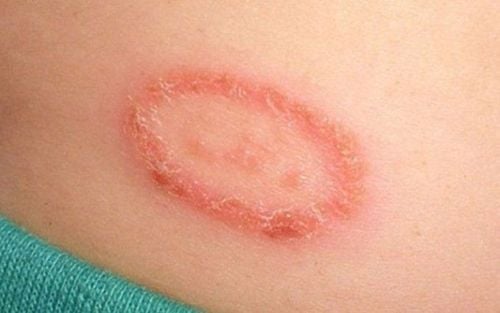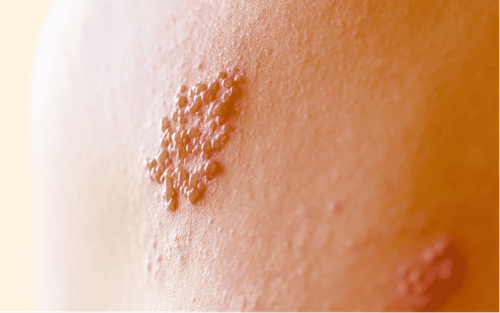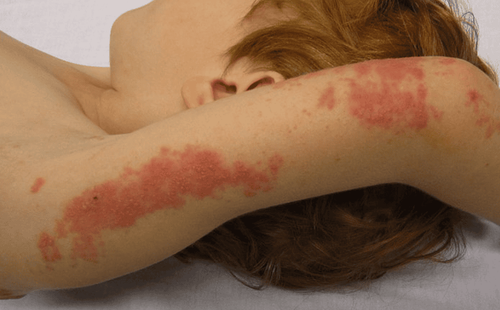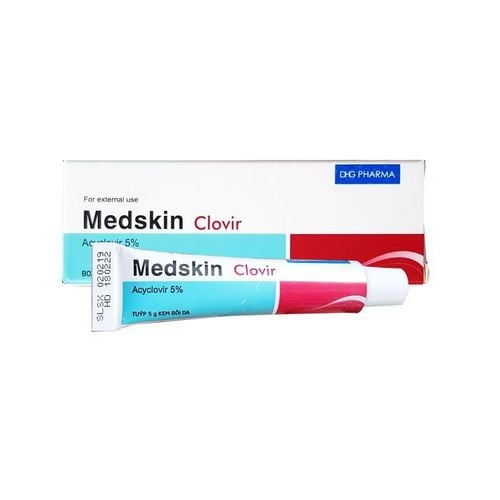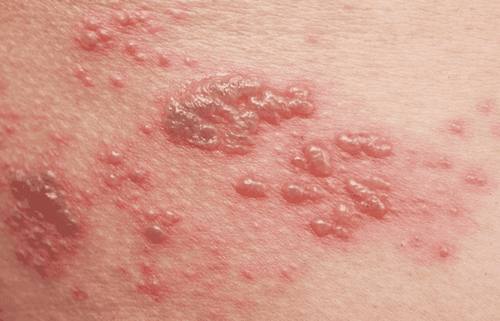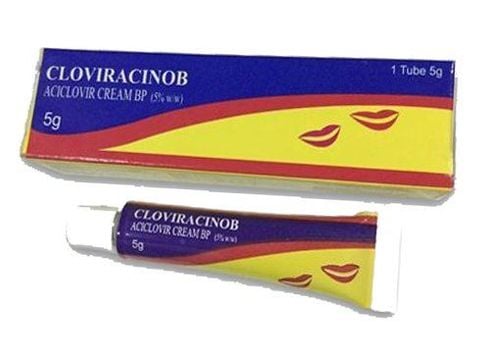This is an automatically translated article.
Shingles is an infectious disease caused by a virus in the form of blisters. Shingles can appear on any part of the body, but are most common on one side of the forehead or around one eye.1. What is shingles?
Shingles is a special type of rash caused by the varicella zoster virus, which is also the cause of chickenpox. When an infected person is exposed to the virus, it causes a widespread, itchy sore called chickenpox. Even after the patient has recovered from the disease, the virus is still growing in the human body. It deposits in nerve cells and can reactivate years later, causing shingles. It is also called herpes zoster, but it is not related to the virus that causes genital herpes. Most adults get chickenpox at least once in their lives. In some people, the virus becomes active and travels along nerve fibers to the skin, causing a painful, rash, a condition known as shingles.
In Latin, “zona” means belt. As a result, shingles appears as a cluster of fluid-filled blisters in a band around one side of the waist. Shingles can appear on any part of the body, but the most common location is on one side of the forehead or around one eye. Small blisters that appear only on the lips or around the mouth can be cold sores, sometimes called fever blisters. They are not shingles, but caused by the herpes simplex virus.
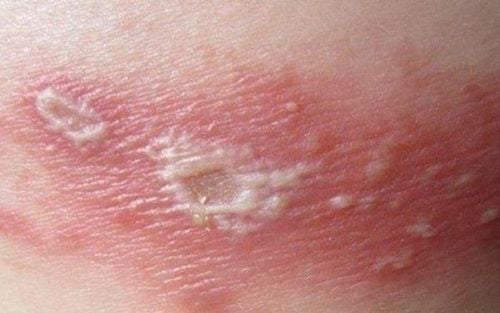
Hình ảnh mụn nước zona
2. Symptoms and diagnosis of shingles
Symptoms:
The first symptoms of shingles appear one to five days before the rash appears. The warning symptoms that the patient feels at the site of the rash are: itching, feeling like an ant sting, pain
When the body has local pain and the rash is a sign of shingles, the symptoms Other symptoms that may appear are: Fever, chills, headache, stomachache.
Diagnosis:
A doctor can diagnose shingles just by looking at the location of the rash. Many children have mild cases of chickenpox but go unnoticed, when the virus can still exist and become active again. To help prevent complications, it's important to get treatment as soon as possible after the shingles rash appears.
Shingles usually crust over in 7-10 days and disappear completely after two to four weeks. In most healthy people, the blisters do not leave scars, and the pain and itching go away after a few weeks or months. But people with weakened immune systems can develop shingles blisters that don't heal in time.
Complications of shingles:
If a shingles rash appears around the eyes or forehead, it can cause an eye infection and temporary or permanent vision loss. In rare cases, the shingles virus can attack the brain or spinal cord. These complications can often be prevented by starting shingles treatment as soon as possible.
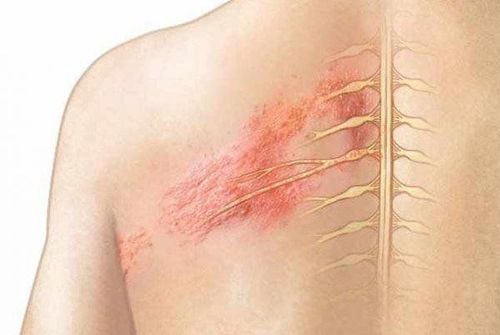
Zona có thể gây biến chứng đến tủy sống và thần kinh
3. Shingles treatment
Shingles can be contagious, but it doesn't trigger a shingles flare-up that sometimes causes chickenpox in children. Therefore, patients with shingles should cover their blisters, avoid contact with infants, pregnant women who have never had chickenpox or the chickenpox vaccine, and those who may have a weakened immune system such as the disease. multiplier.
In some people, the pain of shingles can last months or even years after the rash has healed. This pain is caused by damaged nerves in and below the skin, which is called postherpetic neuralgia. In many cases, people experience chronic itching in the area where the rash was once. In severe cases, the pain or itching can cause insomnia, weight loss, or depression.
Some drugs work to kill the virus and reduce the rash such as:
Antiviral drugs: Doctors recommend using antiviral drugs immediately when shingles first symptoms appear. Early use of medication makes shingles milder and shortens the duration of the disease. Options include acyclovir (Zovirax), famciclovir (Famvir), or valacyclovir (Valtrex). Rash relievers: Over-the-counter pain relievers and anti-itch medications, such as calamine, can help shingles patients relieve pain and itching. If you experience severe pain or a rash is concentrated near your eyes or ears, see your doctor right away. In addition, there are additional medications to reduce inflammation such as corticosteroids.
Home care:
To speed up the drying of blisters, try placing a cool, wet washcloth on the rash (do not use with calamine lotion or other creams)
Gentle exercise to create a comfortable mind.
Please dial HOTLINE for more information or register for an appointment HERE. Download MyVinmec app to make appointments faster and to manage your bookings easily.
Reference source: Webmd.com




